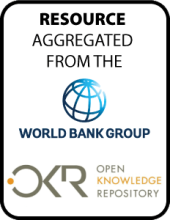Land Library Search
Through our robust search engine, you can search for any item of the over 73,000 highly curated resources in the Land Library.
If you would like to find an overview of what is possible, feel free to peruse the Search Guide.
/ library resources
Showing items 1 through 9 of 10.Land restoration has tremendous potential to help the world limit climate change and achieve its aims for sustainable development.
The Mekong region – Cambodia, Lao PDR, Myanmar, Thailand, and Vietnam – is in the midst of profound social and environmental change. Despite rapid urbanization, the region remains predominantly rural.
Sustainable Land Management (SLM) are required to achieve Land Degradation Neutrality (LDN). SLM options are fitted to the social, economic and ecological contexts.
Farmland ownership fragmentation is one of the important drivers of land-use changes. It is a process that in its extreme form can essentially limit land management sustainability.
During the past decade, Georgia’s
pursuit of economic reforms led to impressive economic
growth, capital inflow, and investments. It helped improve
the business environment and infrastructure, strengthened
This publication is a baseline assessment reviewing the current knowledge of land degradation in the rangelands of Jordan - known as Badia - with a special focus on its causes.
This report suggests that a new and explicit goal of sustainable development to be agreed as a result of Rio+20 should be the reduction of the rate of land degradation to achieve land degradation neutrality, which we refer to as “Zero Net Land Degradation” or ZNLD.
This paper analyzes the adoption behavior of smallholder farmers using comparable plot-level duration data for Kenya and The Philippines. We find that adoption behavior is strongly linked to the process of land ownership transfer.
Land degradation is a major problem in almost all the countries. In most of the developing countries, population pressure and small farm sizes, land tenure insecurity, land redistribution, limited access to credits and limited education are the factors leading to unsustainable land management.




